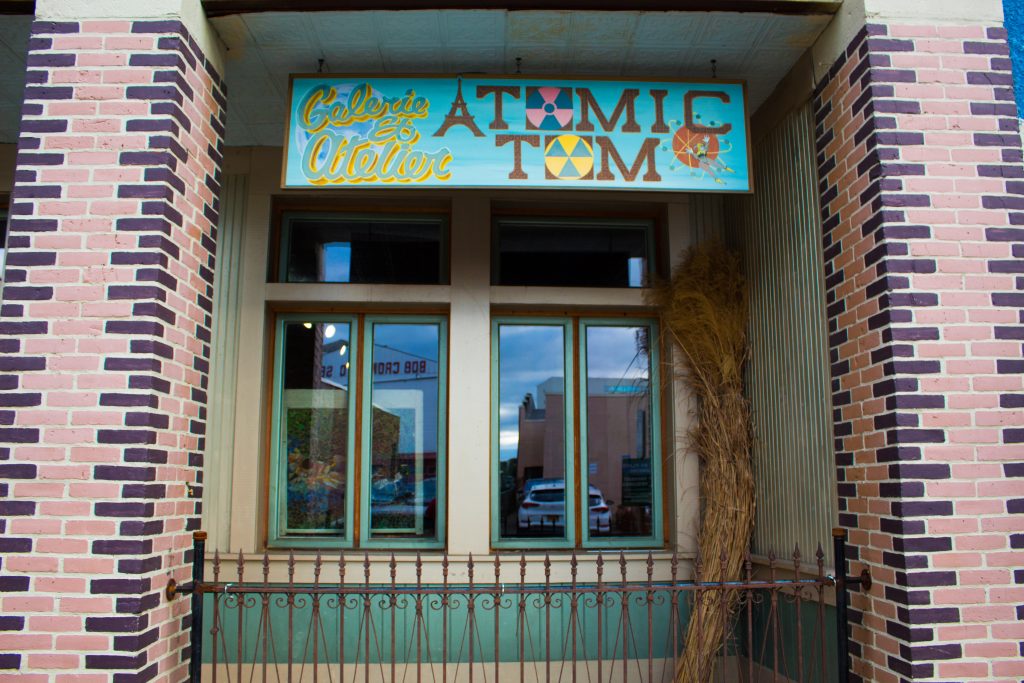
Last Sunday, members of the Rude and Bold Women committee began to set up the works of artists participating in the annual “Rude and Bold Women” visual and performance art show. This year, the annual show will be held on Oct. 5 and 6 at Atomic Tom’s in Downtown Binghamton and will feature live musical performances both nights.
According to Patricia Raube, a member of the Rude and Bold Women committee, the show is a platform within which female artists can “highlight their experience and their view of the world” under the theme of rude and bold women.
Rude and Bold Women was created by artist Susan Jablon in 1996. Her role as volunteer coordinator of City Plaza Gallery in the city of Binghamton pushed her to display the work of emerging artists. She called out to female artists within a 100-mile radius of the area to participate in the first show and it was highly successful, featuring both visual and performance art. Despite how well the event was received, certain works were considered controversial by the gallery’s administration, and Jablon was fired from her position. A group of local women who attended the first show worked to have the show reinstated and it re-emerged in 2001, the first annual show lasting over four consecutive weekends. “Rude and Bold Women” has been held each fall since then, except for last year, when the committee took a sabbatical.
Raube acknowledged that the show is open to artists at any point in their career, regardless of whether or not the artist in question considers themselves professionals in the art world.
“The show has gone through some different themes and phases,” she said. “We just ask women to tell us how their art relates to the theme of rude and bold women. We have artists at all levels, from people who call themselves enthusiastic amateurs to women whose livelihood is their art. It’s all in the same show because it’s all in support of women and this enterprise.”
Raube disclosed that there have been men who have applied to participate in the show, and they have not easily accepted rejection, despite the show explicitly calling for female artists.
“We accept women, people who identify as women,” Raube said. “I want to emphasize people who identify as women. We accept art from trans women, they are absolutely welcome. It was really interesting to me that a man could not accept that women would want to have a space that was for their art.”
Raube said the pieces that viewers can anticipate for this upcoming show revolve around themes of bodily autonomy.
“We’re seeing some political pieces,” Raube said. “We also have a lot of pieces that are about women’s bodies. We have a whole installation of breasts by one artist and we have a number of pieces that are dealing with women’s bodies in ways that some people might be uncomfortable about, like things referencing menstruation.”
Andrea Hill, a local artist participating in the show, said that her particular pieces fit into the show by venturing into questions of identity and self-discovery.
“Both of them are dealing with identity and finding self,” she explained. “The [piece] ‘Self on the Edge’ is me coming out of a really dark spot, and the other is about finding adopted family and being raised in an upper-middle-class white family.”
Raube stressed the importance of Rude and Bold Women within today’s political and social climate in which women must fight to be seen and heard.
“I would say especially in this era in which women’s autonomy and women’s rights feel very much under attack,” Raube said. “I am really grateful that there is this space that is not only a safe space, but an actively welcoming, encouraging space for women to express themselves through their art. I think that’s the point of the show.”
Pieces like artist Patricia Heaton’s “I Love Red States,” which references the novel and television series “The Handmaid’s Tale” and “Trump’s Tower: It’s Coming Down” highlight this relevancy.
Tom Haines, owner of Atomic Tom’s, agreed with Raube’s statement.
“This is always a great show,” he remarked. “It’s real positive, I think especially right now. There’s a politic to it that I like.”
Raube said that a crucial aspect of the show is the message its members and participating artists aim to send — that their art is a window into the lives of women in the community.
“[We’re] just women putting out there: This is this,” Raube said. “This is our life. And we’re making art about it.”


